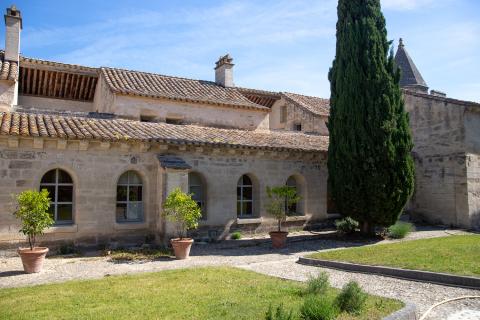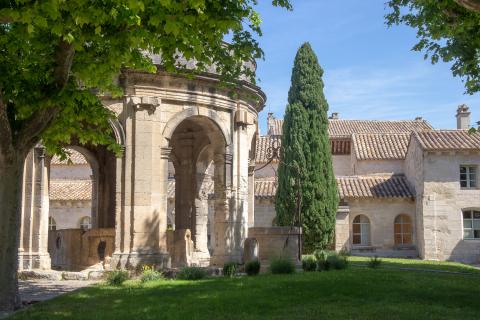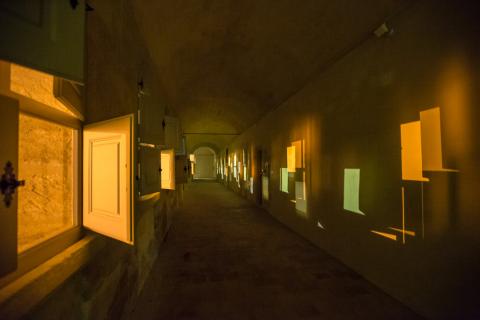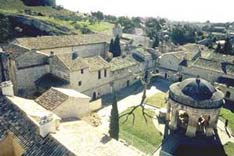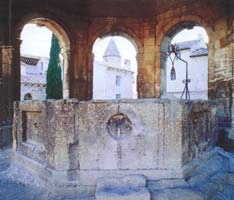The pool dates from the 1600’s.
The fountain is the center of a hydraulic system which channeled water throughout La Chartreuse. The catchment area was a place called L’Hermitage, on the heights above Villeneuve and the water descended via gravity through a buried conduit and an aqueduct. The pool fed by the fountain gave way to underground piping which distributed water to the Cloister of the Dead and The Sexton’s Courtyard, and the lay brothers’ quarter. A system of channels dug into the rock carried water into the cells.
To water their gardens, the Carthusians drew water from a water-wheel called a noria which had been located in the northwest corner of the monastery.
Saint John’s Cloister is slightly higher than the rest of the monastery. Here, the air was considered more pure and the cloister was reserved for the older monks. After the French Revolution, the cloister became the centre of a neighbourhood in the town of Villeneuve-lès-Avignon and held up to 300 families.




